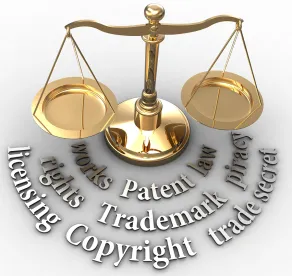Utility patents protect ideas and inventions; design patents protect aesthetic features of a product; and trademarks protect the exclusive consumer association with your company that your brands, logos, or designs evoke. Despite the differences in these types of intellectual property (“IP”), these are some common issues that arise in patent and trademark lawsuits.
Overlap of Design Patent With Trade Dress
Design patents and trade dress are legal protections for visually identifiable features of a commercial product, the purpose of which is not exclusively or primarily functional. Famous examples include the distinctive shape of Coca-Cola bottles and the red soles of Christian Louboutin shoes. The owner of the UGG brand has both design patents and trademarks covering its shoe designs, demonstrating that these two forms of intellectual property can cover the same aesthetic features. If a visually identifiable feature of a product turns out to have too functional a role, it will not qualify for trade dress or design patent protection. For example, the shape of Gibson guitars does not qualify for trade dress because it was determined to serve a primarily acoustic function. This means that in enforcing claims of design patent and trade dress infringement, the IP owner must emphasize the aesthetic, non-functional design features. By the same token, in defending against infringing claims, a defendant is best served by persuading a court that the allegedly aesthetic features in fact serve a primarily functional purpose.
Significance of Commercial Success in Patent and Trademark Cases
In proving non-obviousness in a patent case, you must argue that your innovation led to an increase in the commercial success of a product. If innovation is obvious, someone would have invented it sooner, since it played such a major role in the product’s commercial success. By the same token, commercial success is an important factor in proving the strength of a trademark, and therefore, the scope of protection it enjoys against infringements even in less related fields. For example, if you can prove your social media platform is commercially successful, you might stop a dating app from using the same mark your platform uses. The tension between commercial success in patent and trademark cases is that on the one hand, you are arguing that the innovation contributed to the success; and on the other, you are arguing that the brand is widely recognized as a result of commercial success. A plaintiff in a patent and trademark case must be careful to differentiate commercial success arising from an innovative product, and commercial success arising from the goodwill accrued under the brand. And a defendant in a patent and trademark case can exploit this tension by arguing that commercial success is not attributable to the strength of a mark, or to innovation, whichever will better serve its defense.
Offer for Sale vs. Date of First Sale
If you sell goods or services incorporating an invention one year or more before filing a patent application, your patent is void. This invalidating public disclosure is an “offer for sale.” This “offer for sale” is distinct from the “date of first sale” you must identify in your trademark application. A date of first sale identified for trademarked goods in a trademark application that is earlier than the actual date of first sale is potentially invalidating if the U.S. Trademark Office relied upon the date in issuing the registration. For example, descriptive marks cannot be registered until they have “acquired distinctiveness” (consumer understanding that the trademarked product comes from a single source). Acquired distinctiveness, in turn, requires five years of use. If the trademark applicant falsely claims an earlier date of first use, resulting in a finding by the U.S. Trademark Office of “acquired distinctiveness,” then the false first use date can invalidate the resulting trademark registration on the grounds of fraud. Fact-finding on an “offer for sale” can help you determine if the “date of first sale” claimed by a trademark owner is too early and therefore effectively defend both patent and trademark infringement claims.
Choice Venue
Patent cases may be litigated only in federal court, and trademark cases may be litigated in either federal or state court. Consequently, if the claims are brought together, they must be brought in federal court. The patent venue statute dictating where you can bring suit is much more narrowly drawn than the venue provisions that apply to trademark disputes. Generally, you may sue a trademark infringer anywhere the infringing mark is used, but you can sue the patent infringer only where it is incorporated (or where an individual infringer resides) or has a regular and established place of business.




 />i
/>i

